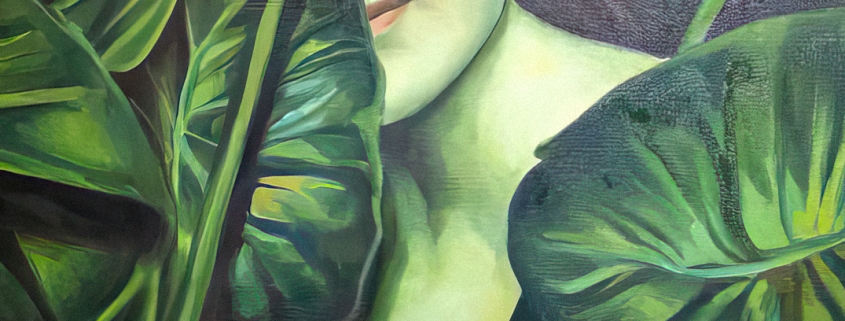GRADUATION HIGHLIGHTS 2021
Various Artists
STATEMENT
According to Mihai Savin (coordinated by Assoc. Prof. Simion Cristea, PhD, Senior Lecturer Mihai Vereștiuc, PhD), “just as for the public the aesthetic experience is coloured by their own cultural baggage, in the same way, an author-artist is subjugated to his own memory, the only possibility to create being a collage of ideas, symbols, definitions, etc. Thanks to this structuralist concept, I began to understand my intentions. I found that in my work process, although to some extent involuntary and dictated by circumstances, the study and realization of figurative representations have many more dimensions than we initially considered and, perhaps more importantly, the considerable spatial-temporal distance became visible between me and the subject. Understanding this, I managed to observe for the first time some of the mediators (practical and abstract) that make my work practice possible.”
Alexandra Macarie’s project ‘Zoomorphic Allegories’ (coordinated by Prof. Zamfira Bârzu, PhD) “presents a pictorial discourse in which the main protagonists are animals in visual sequences that aim to transmit ideas and concepts such as consumerism, pollution or deception, phenomena that we find in contemporaneity. The artist explores animals, their role and significance as a subject in art, focusing on animals with a strong symbolism behind them, such as the polar bear, an emblem against consumerism, which helped to understand that we live in a state of real emergency or the fox, known throughout Western culture as a skilful deceiver. Thus, animals are symbols here, allegories that refer to our lives, each animal having a symbolism that is also found in human behaviour and psychology. The theme proposes a reflection on the existence and things that we should change in contemporary society.”
The works of Luminița Lupuca (coordinated by Prof. Cristian Neagoe, PhD) talk about “the tragedy of Australia and the fires that destroyed a quarter of the forests, destabilized the fauna through thousands of species of animals and birds lost in smoke, as well as human habitats. There is a cyclicality of disasters on this continent and even Australia’s identity as a space is closely linked to fires, but in the current context, this work, which starts from the aestheticization of disaster, of nature swallowed by flames, raises the alarm, reminding us not of the strength of the spirit, but of the disintegration of the world, as we know it.
The works of Oana Bejinari (coordinated by Prof. Cristian Neagoe, PhD) “examine the experience of loneliness in the postmodern era, aiming at decoding the concept of voluntary and conscious isolation. In a society dominated by economic, technological progress, the false illusion is created that we are always connected to what is happening around us. In reality, we are witnessing a spiritual ‘disconnection’ in order to be available in the virtual world. In the form of a game of hide-and-seek, the characters hide behind various objects, plants, to illustrate a situation from which we want to get out, to escape. The ‘hide-and-seek’ childhood game involves important processes such as the permanence of objects, which continue to exist even when we cannot be seen or touched, as well as the trust in the relationship of separation and reunion. I chose to illustrate the experience of loneliness through this game, but not through the eyes of the child, but through the filter of the experiences of the mature person. The need for refuge, for temporary loneliness best exemplifies the desire to hide sometimes. In this regard, space plays an important role, being a landmark for both those who seek and those who hide.”
According to Răzvan Ciprian Cozma (coordinated by Prof. Cristian Neagoe, PhD), “vocation has in it a theandric power: the power of man to answer God’s call addressed to each of us through the gifts that God gives every being. Our gifts and talents or, to use a more neutral term, our abilities are the calling with which God calls each of us. Gifts are the talents (coins) that God asks us to multiply. The people who have a vocation answer the divine call, the career man does not seem to be aware of the divine call of his name and takes things a little easier, lukewarm. That is why there are so many careers that bring money without bringing any growth for the person in question, for his family, for his people.”
The works of Alina Sărăcuțu, (coordinated by Prof. Cristian Neagoe, PhD), “propose a short reflection on the idea of beauty, as an interface between ourselves and society, between what we are and our image through the filter of society. The moment we realize that our own physiognomy ‘does not meet’ certain ‘criteria’, inner trauma occurs. Through ‘Rejected’ I wanted to illustrate the painful experiences of those who carry a certain physical stigma. Although the character is illustrated with his eyes closed, to protect himself from the harsh reactions of those around him, his face reflects the stubbornness with which he faces rejection and contempt every day. The second work, ‘Botched’, is diametrically opposite and refers to the effect of social pressure on self-perception. This effect is the extreme measure: the facial changes, but also the body changes, which are often in conflict with human nature, but also with the psychological side of the individual. In search of the perfect image, confidence, self-esteem, some people, especially women, sacrifice their bodies on the table of cosmetic surgery, regardless of costs and risks.”

